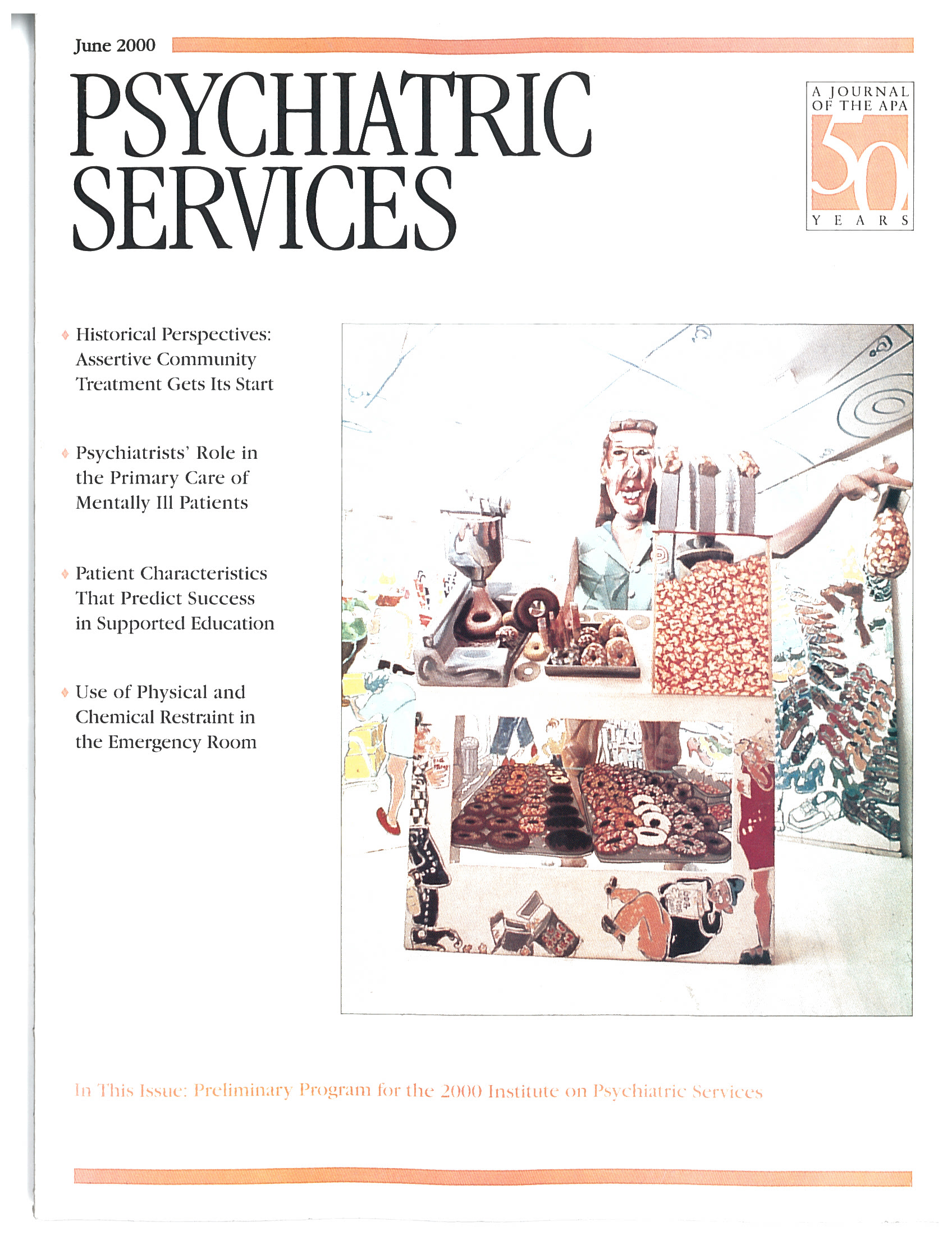The late 1990s have seen a flurry of book-length publications on the topic of self-mutilation, including cutting, burning, hitting, and excoriation. Besides the two reviewed here, they include Strong's
A Bright Red Scream (
1), Levenkron's
Cutting (
2), Kettlewell's
Skin Game (
3), and, most recently, Hyman's
Women Living With Self-Injury (
4). This burst of publication activity points to the increased incidence of self-mutilative behavior in the U.S. as well as to burgeoning public awareness of and interest in the problem.
What these six books have in common is that each is directed primarily to a nonprofessional audience. Hyman (
4) presents considerable biographical material, Kettlewell's book (
3) is an autobiographical narrative, and Strong (
1) takes a journalistic look at the problem. Levenkron's book (
2) plus the two books reviewed here target a self-help audience.
Alderman's The Scarred Soul and Conterio and Lader's Bodily Harm offer the most to mental health practitioners. Although the activities they describe are intended for self-help application, many of them can easily be transformed into therapeutic interventions.
The two books have several stylistic features in common. Both are written in an informal, engaging, conversational style. Both are empathic and respectful in tone and strive to use a minimum of jargon. More important, both books provide straightforward explanations about why people self-mutilate. They emphasize that self-mutilation is rarely suicidal in intent and correctly point to the behavior's functions in regulating affect as well as in communicating.
The authors have done their homework in terms of linking self-harm behavior to past histories of trauma, body alienation, and intense feelings of guilt, rage, and shame. They also correctly identify the major comorbid conditions associated with self-injury, including eating disorders, substance abuse, borderline personality disorder, and dissociative identity disorder. But although their presentations of the "whys" of self-injury are accurate and well written, they do not cover much ground not already traversed by Favazza (
5), Favazza and Conterio (
6), and Walsh and Rosen (
7) in the 1980s.
The major contributions of the two books lie in their practical exercises and self-help techniques. Dr. Alderman is a psychologist who has done extensive work with self-injuring clients. The Scarred Soul employs an instructional format, with 49 different activities distributed throughout its ten chapters. Early in the book, the self-help activities consist of a series of questions that the self-injuring reader is encouraged to answer, often in writing. These questions are designed to help self-mutilators understand why they injure themselves and what the results of the behavior are, including its benefits, such as reducing tension and ending dissociation, and its negative consequences, such as scarring and social isolation. Later in the book, the activities focus on learning new ways to communicate, manage affect, and substitute healthier behaviors for self-injury.
It is easy to imagine outpatient clinicians using the activities Alderman presents as a kind of workbook in therapy. A useful collaboration might be for the client and therapist to select exercises that are a good match for the client's specific predicament. Few individuals would be likely to do all 49 exercises. It is important to emphasize that some of Dr. Alderman's exercises seem to require therapeutic assistance. Prominent examples are those that involve self-appraisal of sexually abusive experiences or suicidal ideation and lethality. Clients who attempt to launch into such exercises on their own might find them too provocative and upsetting.
The utility of Conterio and Lader's Bodily Harm lies more on the inpatient side. Ms. Conterio has been a pioneer in the modern understanding and treatment of self-injury, beginning with her collaborations with Armando Favazza in the 1980s. More recently, she and coauthor Wendy Lader, a psychologist, have operated the only inpatient program in the country developed exclusively for the treatment of self-injuring individuals. Their program generally runs about 30 days including both inpatient and partial hospitalization aftercare (personal communication, Conterio K, Lader W, 1999).
The heart of Conterio and Lader's book is their detailed presentation of their unique SAFE—which stands for Self-Abuse Finally Ends—Alternatives Program, located in Berwyn, Illinois. The SAFE program has several key ground rules that other inpatient facilities serving self-mutilators may want to consider. First, those who enter the program must have a "heartfelt motivation to stop." Second, those admitted can voluntarily withdraw at any time.
Third, and most controversial, patients sign a "no-self-harm contract" before admission. If patients violate this contract, they may be subject to probationary status or discharge. While Conterio and Lader admit that many professionals find this rule perplexing, they indicate that it plays a key role in successful treatment. Moreover, they indicate that only about 10 percent of patients leave the program because of contract violations (personal communication, Conterio K, Lader W, 1999). Fourth, patients are discouraged from showing or talking about their scars to other patients in the program, a strategy designed to prevent contagion.
Fifth, patients must refer to the behavior as "self-injury" and not use other language while they are inpatients, which is the program's attempt to control "war stories." Sixth, they must agree to complete copious written assignments while in the program, including keeping an impulse-control log, writing about negative consequences of self-injury and benefits of staying free of self-harm. In addition, patients are expected to develop at least five alternatives to self-harm and to practice them rigorously while in the program.
Although Conterio and Lader's Bodily Harm is written primarily for self-injuring people, their detailed description of the SAFE program provides many useful ideas for inpatient and partial hospitalization staff to ponder. In a similar vein, Alderman's The Scarred Soul can serve as a helpful reference for outpatient caregivers. Both books are to be recommended for their thoughtful, thorough, and well-written presentations. They complement each other well, and their authors are to be congratulated for their respective contributions in treating that most challenging of behaviors, self-mutilation.

